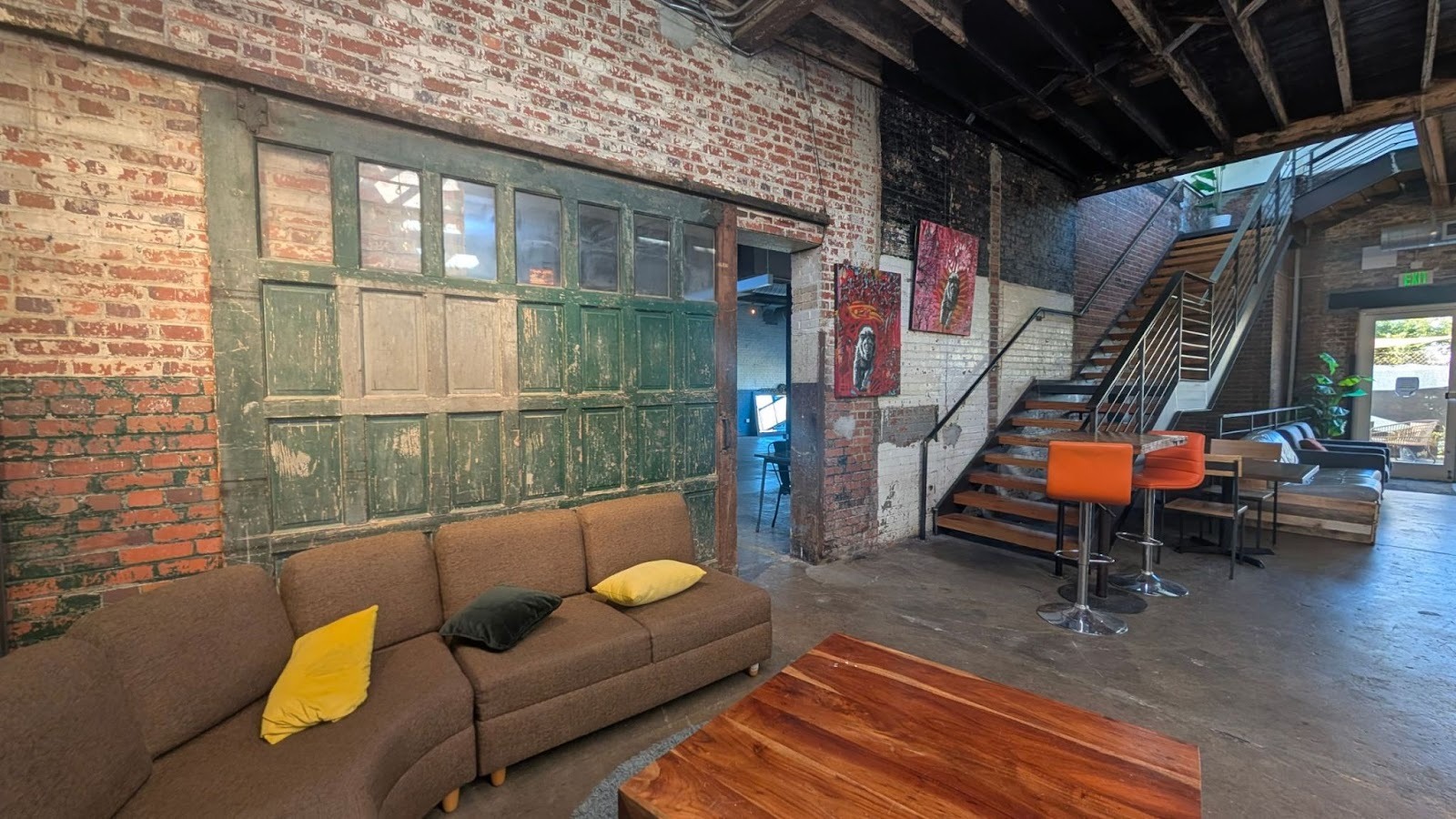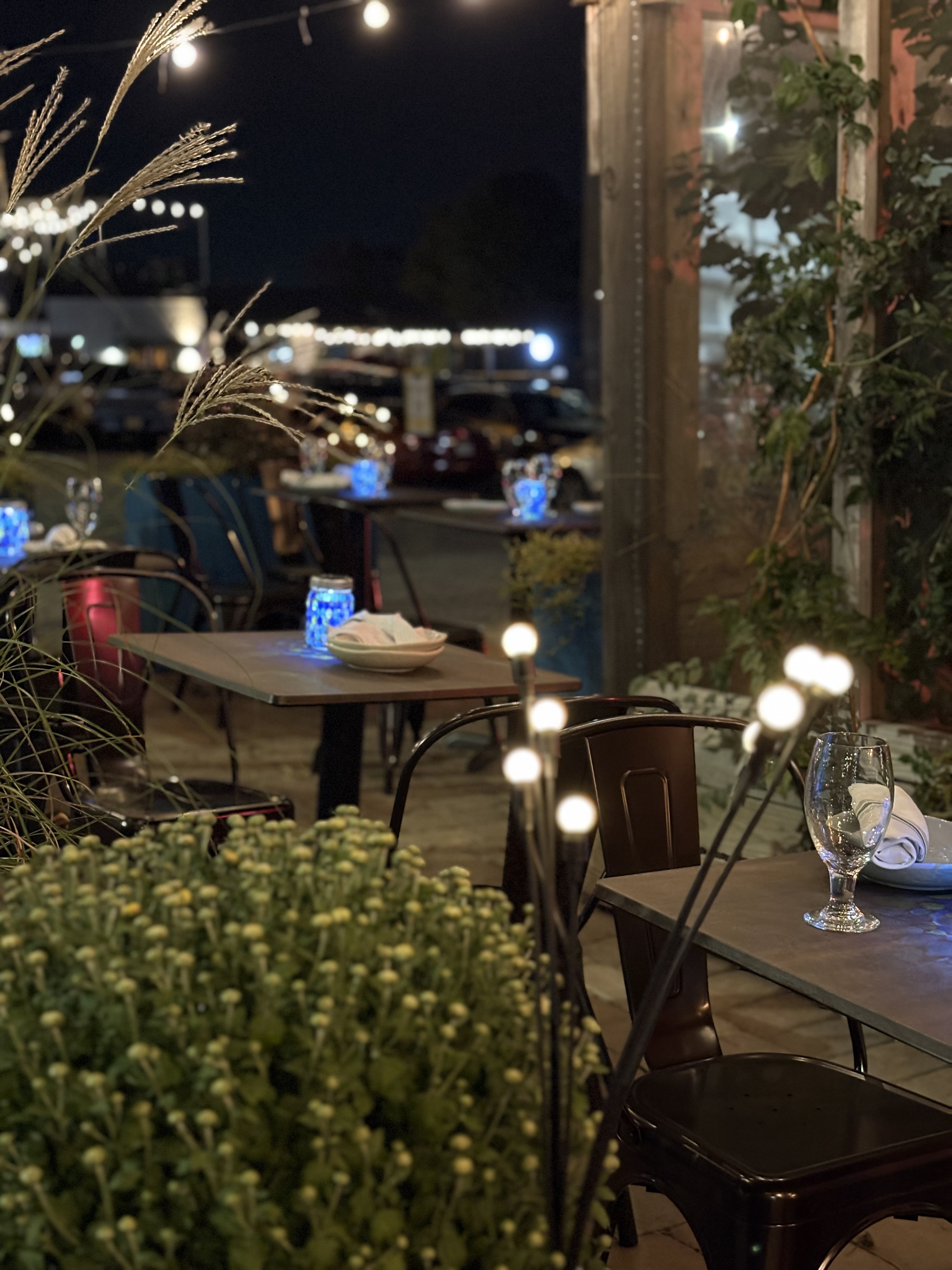Walk a few blocks east of downtown Durham and you can read a century in the brick. Old tobacco and textile buildings line the streets with clerestory windows, painted ghost signs, timber beams blackened by time, and loading docks now dotted with plants and bikes. What used to move by the pallet—leaf, thread, glass—now travels by laptop, sketchbook, camera bag, and meeting agenda. The neighborhood hums differently, but the bassline is the same: production, collaboration, and the steady rhythm of people making things.
This is the quiet power of adaptive reuse—the practice of transforming industrial buildings into spaces for contemporary work, culture, and everyday life. In East Downtown, adaptive reuse is more than architecture; it’s a method for building community. It invites us to inherit a story, contribute our own chapter, and pass along a stronger place than we found.
Durham’s industrial rise etched itself into the physical fabric: long-span floors for machines, brick walls for durability, big windows for daylight before cheap electricity. When manufacturing receded, many of these structures sat empty or underused. The last two decades brought a wave of creative reclamation—think arts campuses, studios, breweries, kitchens, coworking, and event venues—especially across East Downtown and the neighborhoods beyond.
You don’t need a textbook to trace the change. You can see it:
- Ghost signs peeking through fresh paint—layers of brand after brand.
- Rail spurs and loading docks, now pathways for strollers and skateboards.
- Sawtooth roofs and clerestory windows breathing light into workshops, bars, and collaboration zones.
- New doors cut into old masonry to soften edges between inside and street life.
The result isn’t nostalgia. It’s continuity. The same spatial logic that made these buildings productive then makes them productive now—just with different tools and teams.

Adaptive reuse is often framed as preservation. It is. But it’s also performance. It changes how people behave and collaborate the minute they walk in. A few reasons why:
1) Memory as a material.
You can sense the work that happened before you. That subtle awareness raises stakes without adding pressure. It invites care and seriousness. When a gathering happens against a backdrop of honest materials and visible history, it feels consequential.
2) Human-scaled “grandness.”
Old factories are big, but not cavernous in the way new megastructures can be. That proportion—broad rooms, long sightlines, generous ceilings—gives air to ideas and room for teams to move around without breaking focus. Spatial dignity fosters psychological safety.
3) Daylight and texture.
Large windows, rough brick, warm wood, steel details—these textures are not cosmetic. They modulate sound, diffuse light, and keep people alert but calm. Attention spans lengthen when a room has something to “grip.”
4) Friction in the right places.
You have to navigate a step, a threshold, a change in floor level. That minor choreography slows people just enough to notice each other. It’s the opposite of sterile efficiency, and it often yields better conversations.
5) Neighborhood edges that invite participation.
Adaptive reuse tends to stitch buildings back into the block. Instead of singular destinations, you get micro-districts where a morning coffee, a brainstorm, a gallery pop-up, and an early dinner are all a short walk from each other. That density of options builds routine—and routine builds community.
Without turning this into a guided tour, a few patterns are visible across East Downtown and nearby:
- Arts-forward mills and warehouses have become galleries, studios, and performance spaces, creating a dependable circuit for open studios, maker markets, and night-time programming. The creative economy thrives on repetition; adaptive reuse gives it stages that feel both raw and welcoming.
- Hospitality hubs now occupy former production floors. Kitchens and bars tuck themselves beneath beams that once held belts and pulleys. The best of these keep the industrial bones visible while layering in comfort—think thoughtful lighting, flexible furniture, acoustic treatment, and sightlines that make it easy to feel “in” without being on display.
- Coworking and community venues use the same infrastructural advantage: large contiguous rooms, 24/7 building resilience, and inherent flexibility. The old logic of production—clear circulation, defined stations, visible oversight—converts surprisingly well to modern collaboration.
- Public realm add-ons—pocket patios, shaded sidewalks, murals—soften industrial edges and create third places that blur work and life. People linger. Lingerers become regulars. Regulars become a community.
DBCo sits squarely in this lineage within the 506 Ramseur ecosystem: a locally owned, culturally rooted platform where hospitality, workspace, and events cross-pollinate. The building’s material honesty isn’t a theme; it’s an operating system. You can feel how the room wants to be used, which is half the work of good design.

For founders, independents, small teams, and organizers, place is not just a backdrop. It’s an active collaborator.
Place shapes pace.
Bright, over-caffeinated rooms speed you up; warm, grounded rooms slow you down. A healthy cadence needs both. Adaptive reuse buildings often contain multiple “gears” of space—big common rooms for momentum, tucked alcoves for focus, and threshold spaces for transitions.
Place makes constraints visible.
Boundaries make creativity legible. When a room has columns, you design around them. When an event has a load-in via a vintage freight door, you plan accordingly. Constraints sharpen intention, and intention is contagious.
Place supports ritual.
Teams do better with recurring rhythms: Monday morning standups, Wednesday critiques, Friday demos. Physical nodes help anchor these rituals. The barista knows your order; the afternoon light hits the long table the same way; the walk to the whiteboard becomes muscle memory. Ritual is the scaffolding of culture.
Place tells a true story.
Whether you’re pitching a client, recruiting a teammate, or welcoming community partners, the room you’re in does half the talking. Adaptive reuse spaces tell a story about resilience, resourcefulness, and continuity—the very qualities most organizations want to claim.
Durham’s creative DNA isn’t an abstraction. It’s a set of decisions we make block by block—about what to keep, what to change, and how to invite more people into the process. Adaptive reuse is an ethic of stewardship as much as a design strategy. It asks us to carry forward the parts of the past that still serve and make room for the voices that were left out the first time around.
If you’re a founder, a freelancer, a team lead, or a community organizer, you already practice adaptive reuse. You take the raw materials of a day—hours, attention, relationships—and shape them into something useful and alive. Working within rooms that have done that work for a hundred years doesn’t just feel good. It helps.
So the next time you push open a heavy door on Ramseur or step across a threshold into brick and timber, pause. Touch the wall. Notice the light. Ask what this room wants to make with you—and then get to it. Place, after all, is one of our most reliable collaborators. In East Downtown, it’s also our inheritance.
If you want to feel adaptive reuse working in real time, start at DBCo: long tables, brick-and-skylight, meeting rooms that know how to hold focus and conversation at once. This is where sprints happen, ideas get named, and neighbors become collaborators. Slide around the corner to Baryo when the day needs a gentle pivot—morning espresso giving way to evening spirits, a bar that remembers your face and resets your pace. And when it’s time to gather with intention, let Nerra take the baton: a kitchen, bar, and curated market under one roof, seasonal plates and provisions that turn meetings into meals and events into memories. Together they’re a single heartbeat at 506 Ramseur—work, hospitality, and culture stitched into one continuous experience. Wander in for a quiet hour, a quick cup, a long table, or a late toast.

DBCo. is the coworking solution to all of your office needs. We offer an inclusive, supportive community to our members, with all the tools needed to work happily and productively in the modern world.
Unsure about which membership offer will be the best choice for you or your team? We’re happy to discuss our various memberships and rates, and help select the perfect option for you. Contact us today!